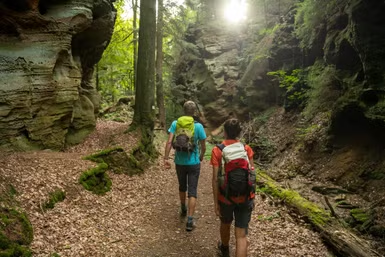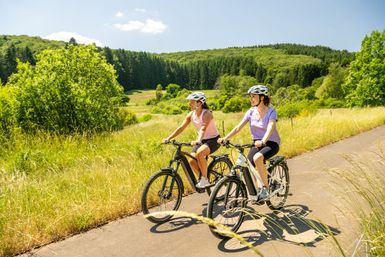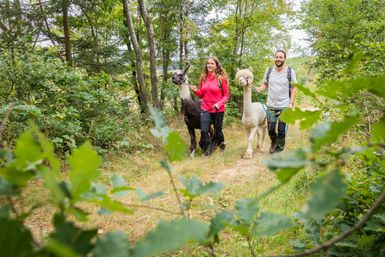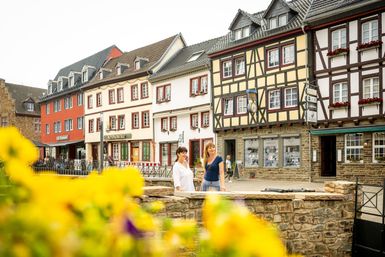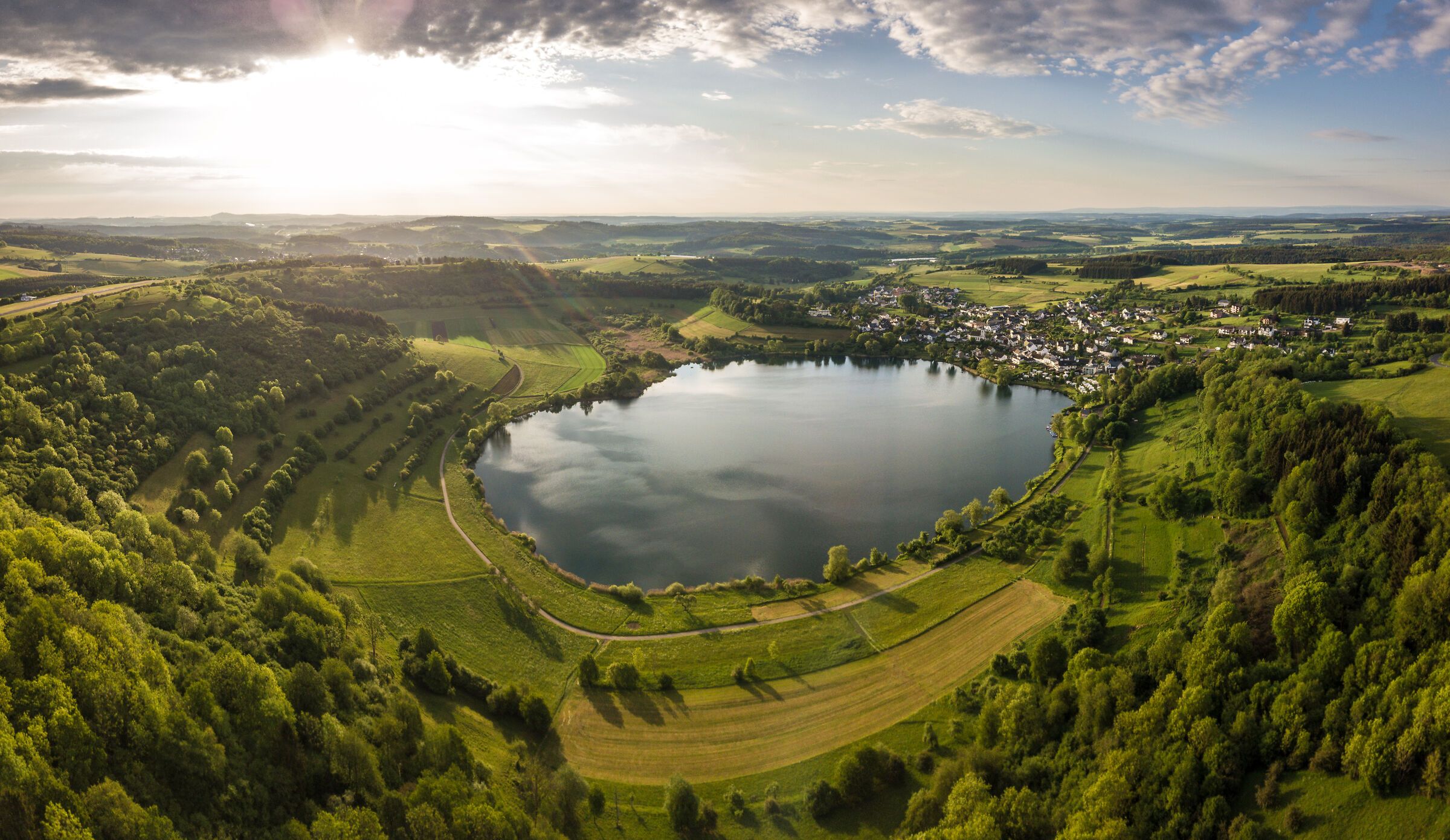
Top 15 excursion destinations
Discover nature, history and culture
The Eifel is a place for real experiences. When you are out and about here, you will encounter a landscape that tells stories: of volcanoes and monasteries, of artisan architecture and quiet retreats, of nature that touches and culture that remains.
Our top 15 selection shows you excursion destinations that allow you to experience the Eifel in different ways. Many of them can be easily combined with a hike or bike tour, others are ideal starting points for a day trip. They invite you to take a closer look. From the mysterious Laacher See lake to the imposing Eltz Castle, from the spiritual power of Maria Laach Abbey to romantic half-timbered towns such as Monschau and Bad Münstereifel and the wild beauty of the national park - each place is special in its own way.
Take your time, get involved - and get to know local stories and special features.
Top 15 excursion tips
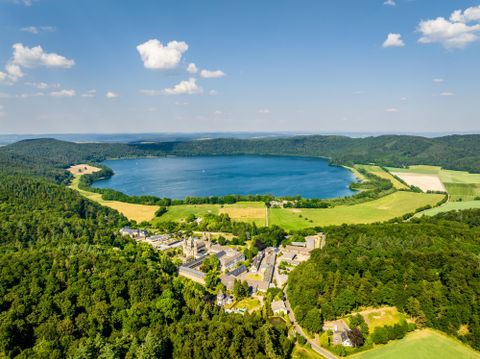
Laacher See
Maria LaachWith around 3.3 km² and a depth of 53 m, Laacher See is the largest lake in Rhineland-Palatinate. The area around the lake has been a nature reserve for almost 80 years. The last eruption of the former “Laacher volcano” occurred around 10,930 BC. B.C., about 13,000 years ago. Traces of volcanic activity can still be found in the form of volcanic outgassing, the so-called mofettes, on the eastern shore of the lake. The total ejection quantity of the outbreak at that time was about 16 km³. The eruption was one and a half times as strong as that of Pinatubo in 1991, or 6 times as strong as the eruption of Mount St. Helens in 1980. Although Laacher See is widely regarded as the largest maar in the Vulkaneifel, it is scientifically not a maar and also not a real crater lake, but a water-filled caldera - a burglary crater that resulted from a collapse after the magma chamber was emptied below the volcanic cone. The volcanic mountain collapses and only the ring bead on the outer edge remains. Over time, the remaining boiler fills up with water. The Laacher See is in the Eifel, next to the neighboring Wehrer Kessel, the largest caldera and the only water-filled one in Central Europe.
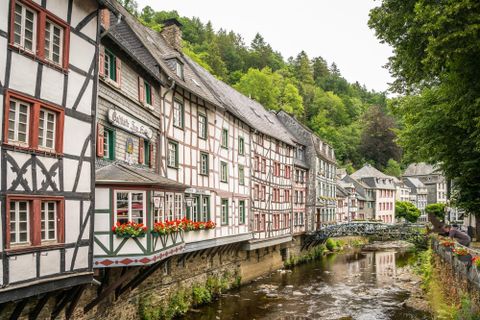
Historic centre of Monschau
MonschauThe historical old town of Monschau at the Rur.
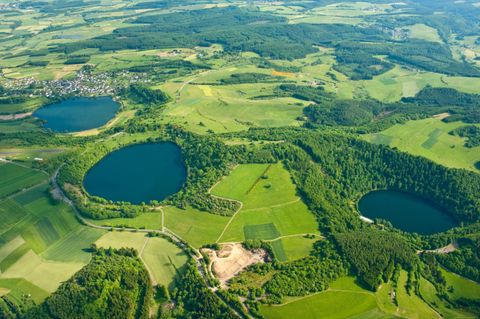
Maare der Vulkaneifel
DaunPowerful natural forces created these unique natural beauties. The "eyes of the Eifel", as they are commonly known, shimmer deep blue and captivate their visitors.
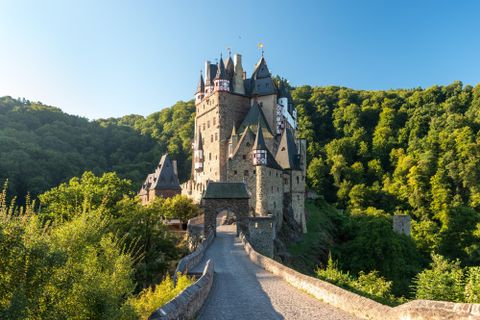
Eltz Castle - the fairytale castle in the Eifel forest
WierschemHigh towers, picturesque oriels, protective walls and a deep castle moat amaze visitors when the well-preserved medieval castle appears out of nowhere on one of the hiking trails - e.g. the award-winning dream trail "Eltzer Burgpanorama". The interior holds some well-preserved treasures: the imposing knights' hall, the armoury and treasure chamber or the bedrooms, living rooms and writing rooms. All this can be experienced on a guided tour between April and November.
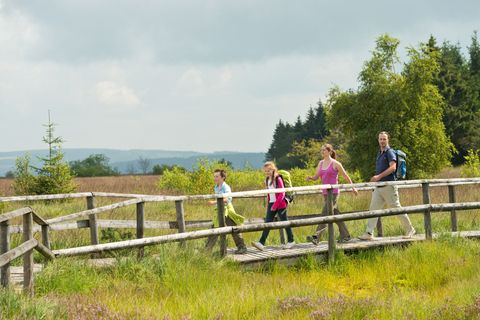
The High Fens
One of the last Highland moors in Europe. One particulary special nature experience are the hiking trails over wooden walkways.
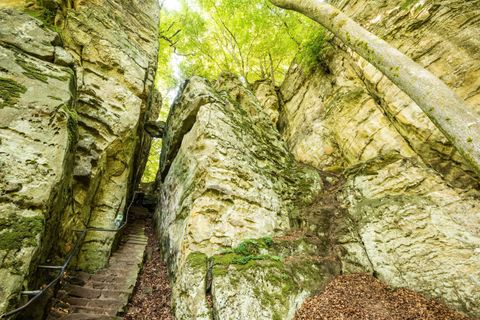
"Teufelsschlucht" (Devil's Gorge)
ErnzenA natural monument of extraordinary fascination: a narrow gorge with metre-high rock faces, cool and dark. Cracks and crevices, weathered and overgrown with mosses and lichens. Anyone walking through this eye of a needle in the sandstone is walking through a 200-million-year-old seabed that harbours many secrets.
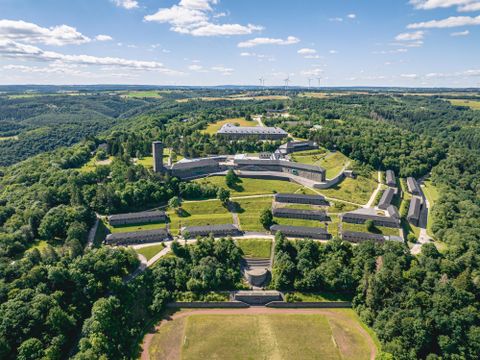



Vogelsang IP
SchleidenIn September 2016, the new visitor’s and exhibition centre, the Forum Vogelsang IP, was opened. The two main exhibitions are the documentation of the National Socialist period, “Destiny: Master Race. National Socialist Ordensburgen - Both Fascination and Crime” and the adventure exhibition “Wilderness Dreams” organised by the Eifel National Park Centre.
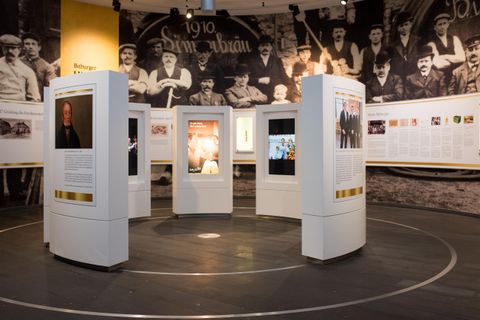
Bitburger Erlebniswelt
BitburgThe home of Bitburger Come to the Bitburger Erlebniswelt to experience our number one draught beer with all five senses
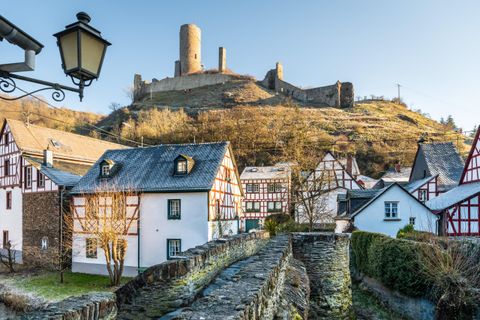
Half-timbered village Monreal
MonrealThe narrow streets of Monreal, its quaint Holy Trinity Church, the massive Nepomuk Bridge over the clear flowing Elzbach and the ruins of Löwenburg and Philippsburg castles high above the town are a perfect destination for an excursion in the eastern Eifel. The red and white half-timbered houses nestle closely together in the former cloth-making town. Not only visually is Monreal an excursion destination that relaxes the soul. Café Plüsch with its cosy interior or the former signal box at the gates of the town are perfect addresses for foodies. The highlight for lovers of handicrafts is the pottery in the old school. Hikers get their money's worth on the Monrealer Ritterschlag hiking trail and are rewarded for the sometimes steep passages with wonderful views.
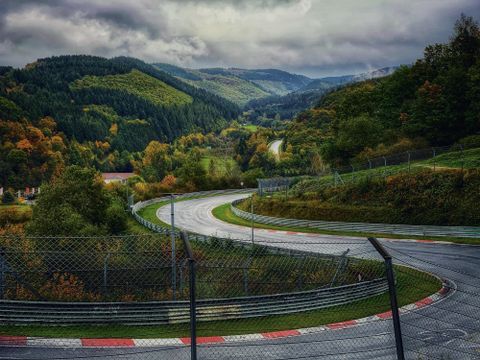
Nürburgring
NürburgThe Nürburgring Green Hell - racing, business, adventure, holiday

